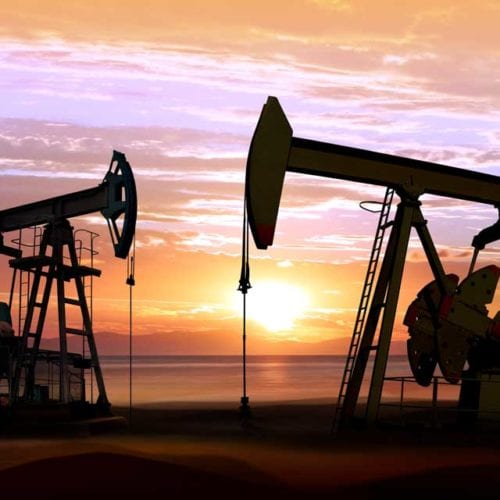Close-up shot of rapids on the Sjoa river in Oppland County of Eastern Norway, Scandinavia, popular for rafting, kayaking, riverboarding and other activities

COVID-19 and Climate: Risk, Mitigation, and Resilience
When a disaster strikes, there is a tendency to see it as unique and unforeseeable; a deviation from the standard order of things. Even the legal language around so-called “natural” disasters references “acts of God”. And yet, even if we do not know when they will come or in what form, in the early 21st century there is nothing more predictable than disasters.
The COVID-19 pandemic is already having profound impacts on our economy and energy systems, but it can also be seen as a harbinger of crises to come as climate change intensifies. In many cases these appear as hidden risks that seem to come out of nowhere, but these consequences have long been foretold by scientists.
And climate change is not the only danger we face. Others include deteriorating public health due to industrialization, growing inequality, habitat destruction and loss of biodiversity, and ultimately an unsustainable level of consumption and associated resource constraints. The climate crisis is a problem on its own but compounds all of these.
Our societies are often ill-equipped to deal with these challenges when they arrive, and need the tools to survive, recover and ultimately thrive. And at the same time, we must confront the root causes of coming disasters if we are to have any hope of a better, more stable world.
In the 21st century, we will fail if we only take one of these two paths. We have to both mitigate the risks of future disasters while at the same time responding to the urgent demands of current crises. And we must do so in a way that makes our world more just, decent and humane.
COVID-19 and Complex Risk
The impact of this pandemic has been hard to internalize for several reasons. First, it is spreading at an almost exponential rate. Second, there are severe impacts on second and third-order effects, such as constraints on public services and the economic structures that are needed for us to contain and respond rapidly to this crisis. Finally, with a large number of carriers who do not yet show symptoms you cannot see the full impact of the problem today; the spread of the virus is only visible a week or so later.
In this and other crises, there is an interplay between different factors; in this case health, the economy and society. These factors all have the ability to compound each other, and the effects of that interplay drives exponential “stochastic” or unpredictable risk. Such risk is not measurable, and dynamics today produce results down the road so it’s very hard to measure or often even perceive causal relationships.
All of these characteristics equally describe environmental disasters, with climate serving as another vector. Climate change manifests in ways that are often indirect, where causation is hard to pinpoint. The carbon that was put into the atmosphere in previous decades is bringing more volatility in weather systems today, resulting in more frequent and intense hurricanes, wildfires, droughts and other disruptions, but no specific event can be directly tied to any particular emissions. And like the coronavirus, these disasters inevitably have economic and social ramifications.
The underlying structure of our political and economic systems create further challenges. These are designed to manage human interactions, not manage the human relationship with nature. The core challenge relates to addressing unmanaged externalities, of which carbon emissions are perhaps the most salient example, and which are now impacting us on a global level creating systemic risk. Our economic system does not effectively deal with externalities, and political systems have not effectively stepped in to manage these.
Economic and Financial risk
Environmental and social disruption ultimately translate into economic and financial risk, from which there is no easy shelter. The economy has staggered to a halt in response to the necessary government action to slow the spread of coronavirus, with cascading impacts on employment, savings, and growth prospects.
While we can predict with more certainty the threats that climate change poses to our economic and financial systems, in many ways financial institutions are no better prepared to manage the risks of a climate catastrophe. Traditional risk management approaches rely on historical data and assumptions of “normal” distribution of certain outcomes. Yet , if we fail to avert the worst of its impacts, climate change will bring about an entirely new normal, far beyond what any financial model can anticipate. Even if models could predict the outcomes of unmitigated climate change, the consequences would likely be too extreme and far-reaching for any one institution to manage.
Yet as we witness the impacts of the pandemic reverberate across the financial sector, we often forget how the financial sector, in its turn, shapes the economy. In the case of climate change, financial institutions have the agency—and responsibility—to play their part in preventing a catastrophe scenario. Though individual climate action by a single financial institution may seem inconsequential, collective action across the financial sector can be a key force to push us toward a future that is both low-carbon and resilient.
Already we’ve seen the effectiveness of collective financial sector action, through initiatives such as the Poseidon Principles—in which banks representing over a quarter of global shipping debt have agreed to help steer the shipping sector toward decarbonization—and through climate-related shareholder resolutions submitted to major fossil fuel companies.
Resilience and Mitigation
The new normal means that we are facing both short-term and long-term risks. The challenge is how to address both, which means combining mitigation measures with measures to make communities, energy systems and economies more resilient. Fortunately, many of the solutions that help to mitigate climate change can also enhance resilience, in a way that enhances the effects of both.
This applies to both policy measures and physical infrastructure. Whether we are talking about hurricane-proof solar-powered microgrids in the Caribbean or “green” recovery programs that put people back to work by weatherizing homes and building the transmission lines and EV charging networks that we need for a low-carbon future, mitigation and resilience can work well together. This includes in the financial sector, where climate alignment of portfolios can help to put the world on a path to lower emissions, while reducing risk for investors.
We at RMI are increasingly focused on the necessary steps to limit global emissions in line with keeping global temperature rise below 1.5°C, and our work has always been about building resilient systems while looking at longer-term effects. In the coming days and weeks, we will be sharing more stories about how our work intersects with both the short-term needs and conditions of this crisis and the mitigation of future disasters.
We are also aware that now more than ever, there is a need to think bigger. We must not only advance short-term tactics for resilience and mitigation, but look at the larger context. Crisis will force us to rethink our political and economic assumptions. There is both a need for alignment of incentives and interests vs. positional negotiation, and to consider equitable distributions of limited resources, including the services provided by nature and the rights for natural resources.
Crises force change. And in the 21st century, there will be no shortage of these.

